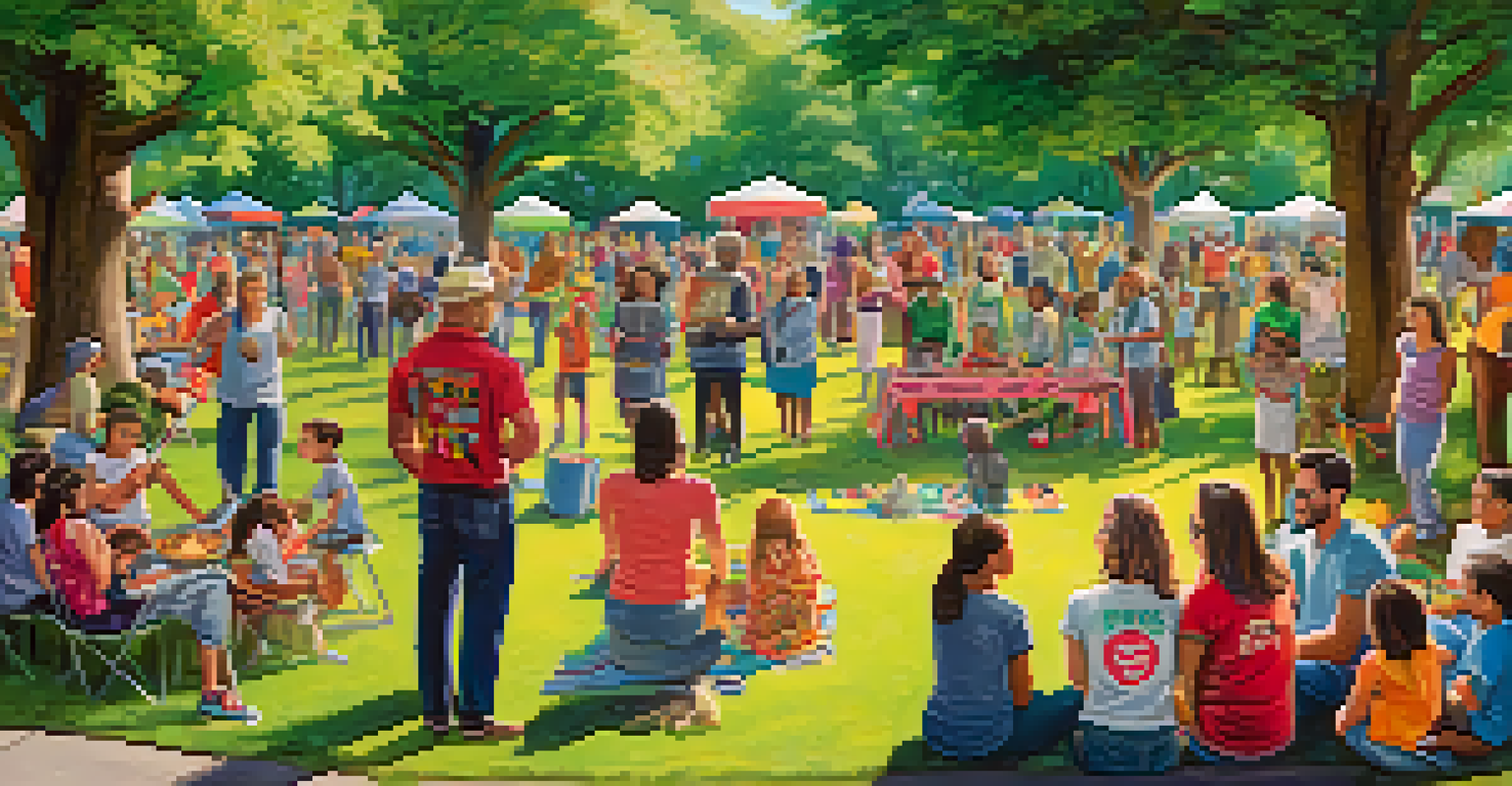Animal Rights and Social Justice: A Unified Movement

Understanding Animal Rights: More Than Just Compassion
Animal rights encompass the belief that animals deserve to live free from suffering and exploitation. This perspective goes beyond mere compassion; it argues that animals have inherent rights similar to human rights. Just as we advocate for the rights of marginalized communities, recognizing the rights of animals is crucial for a more equitable society.
The greatness of a nation and its moral progress can be judged by the way its animals are treated.
This movement challenges the way we view animals, urging us to see them as sentient beings rather than mere commodities. For example, factory farming practices often prioritize profit over animal welfare, highlighting the urgent need for reform. By acknowledging animal rights, we address not just their suffering but also the ethical implications of our choices.
Ultimately, understanding animal rights requires a shift in our moral compass. It prompts us to question societal norms and encourages us to adopt lifestyles that prioritize compassion and justice for all beings, human and non-human alike.
Social Justice: Expanding the Circle of Compassion
Social justice aims to create a society where everyone has equal access to rights, opportunities, and resources. It addresses systemic inequalities based on race, gender, class, and other identities. By expanding this definition to include animals, we foster a more inclusive understanding of justice.

For instance, communities that are marginalized often bear the brunt of environmental degradation and industrial practices that harm both people and animals. By recognizing the interconnectedness of these issues, we can advocate for policies that promote the welfare of all beings. This holistic approach not only uplifts marginalized groups but also protects the voiceless.
Animal Rights as Social Justice
Recognizing animal rights is essential for fostering a more equitable society that values compassion for all beings.
Embracing social justice in the context of animal rights encourages individuals to challenge oppressive systems. It inspires collective action, urging us to work together to create a fairer world, where both animals and humans thrive.
The Intersectionality of Movements: A Shared Struggle
Intersectionality highlights how various forms of oppression overlap and impact individuals differently based on their identities. In the context of animal rights and social justice, this framework reveals how systemic issues affect both humans and animals. For example, communities most affected by environmental harm often suffer alongside exploited animals.
Our task must be to free ourselves... by widening our circle of compassion to embrace all living creatures and the whole of nature in its beauty.
When we recognize these intersections, we can create more comprehensive solutions that address multiple facets of injustice. By collaborating across movements, activists can leverage their strengths, amplifying the impact of their efforts. This coalition-building fosters solidarity and inspires a broader audience to engage with both causes.
Ultimately, understanding intersectionality allows us to see the bigger picture. It reminds us that the fight for justice is interconnected, urging us to advocate for a world where all beings are treated with dignity and respect.
Empathy as a Driving Force in the Unified Movement
Empathy is a powerful catalyst for change, encouraging us to understand the experiences of others. In the context of animal rights and social justice, empathy can bridge the gap between different movements. When we empathize with the suffering of animals, we are more likely to advocate for their rights alongside human rights.
For example, campaigns that highlight the plight of factory-farmed animals often resonate with broader social justice issues, such as workers' rights and environmental justice. By fostering empathy, we can inspire individuals to take action, whether through advocacy, lifestyle changes, or supporting relevant organizations. This emotional connection can galvanize collective efforts.
Intersectionality in Advocacy
Understanding the overlapping struggles of humans and animals allows for more comprehensive solutions and solidarity in activism.
Ultimately, empathy creates a sense of shared responsibility. It compels us to act, not just for ourselves but for the well-being of all beings, making it a crucial element of a unified movement.
Education and Awareness: Key Tools for Change
Education plays a vital role in fostering awareness about the links between animal rights and social justice. By informing individuals about the realities of animal exploitation and systemic oppression, we can motivate them to take action. Schools, community organizations, and social media platforms can all serve as effective channels for this important information.
For instance, documentaries and literature that explore these interconnected issues can inspire critical conversations. By sharing stories of both human and animal struggles, we can cultivate a deeper understanding of our collective plight. This knowledge empowers individuals to challenge the status quo and advocate for meaningful change.
Ultimately, education and awareness serve as the foundation for a unified movement. They equip individuals with the tools they need to make informed choices, encouraging a culture of compassion and justice.
Advocacy: Taking Action for Animals and Humans
Advocacy is essential in driving change for both animal rights and social justice. By raising our voices and challenging harmful practices, we can influence policy and societal norms. Effective advocacy often involves grassroots movements, lobbying, and collaborating with various organizations to amplify our message.
For example, campaigns that demand better treatment of animals in agriculture can also highlight the rights of farmworkers. By connecting these issues, advocates can create a more compelling case for reform. This holistic approach not only benefits animals but also uplifts the people who are often sidelined in these discussions.
Empathy Drives Unified Action
Empathy serves as a crucial force that connects individuals across movements, compelling them to advocate for the rights of both humans and animals.
In conclusion, advocacy is a powerful tool that enables individuals to make a difference. By standing together for the rights of all beings, we can create a more just and compassionate world.
A Vision for the Future: Unity in Diversity
The future of animal rights and social justice lies in unity among diverse movements. By understanding that our struggles are intertwined, we can form a collective vision for change. This vision encourages collaboration, empathy, and shared goals, fostering a sense of community among activists.
For example, movements that advocate for climate justice often intersect with animal rights campaigns, as environmental destruction disproportionately impacts both humans and animals. By working together, we can create solutions that address these overlapping challenges, paving the way for a sustainable future.

Ultimately, a unified movement for animal rights and social justice represents the best of our shared humanity. It invites us to envision a world where all beings coexist harmoniously, free from oppression and suffering, and inspires us to take action toward that goal.